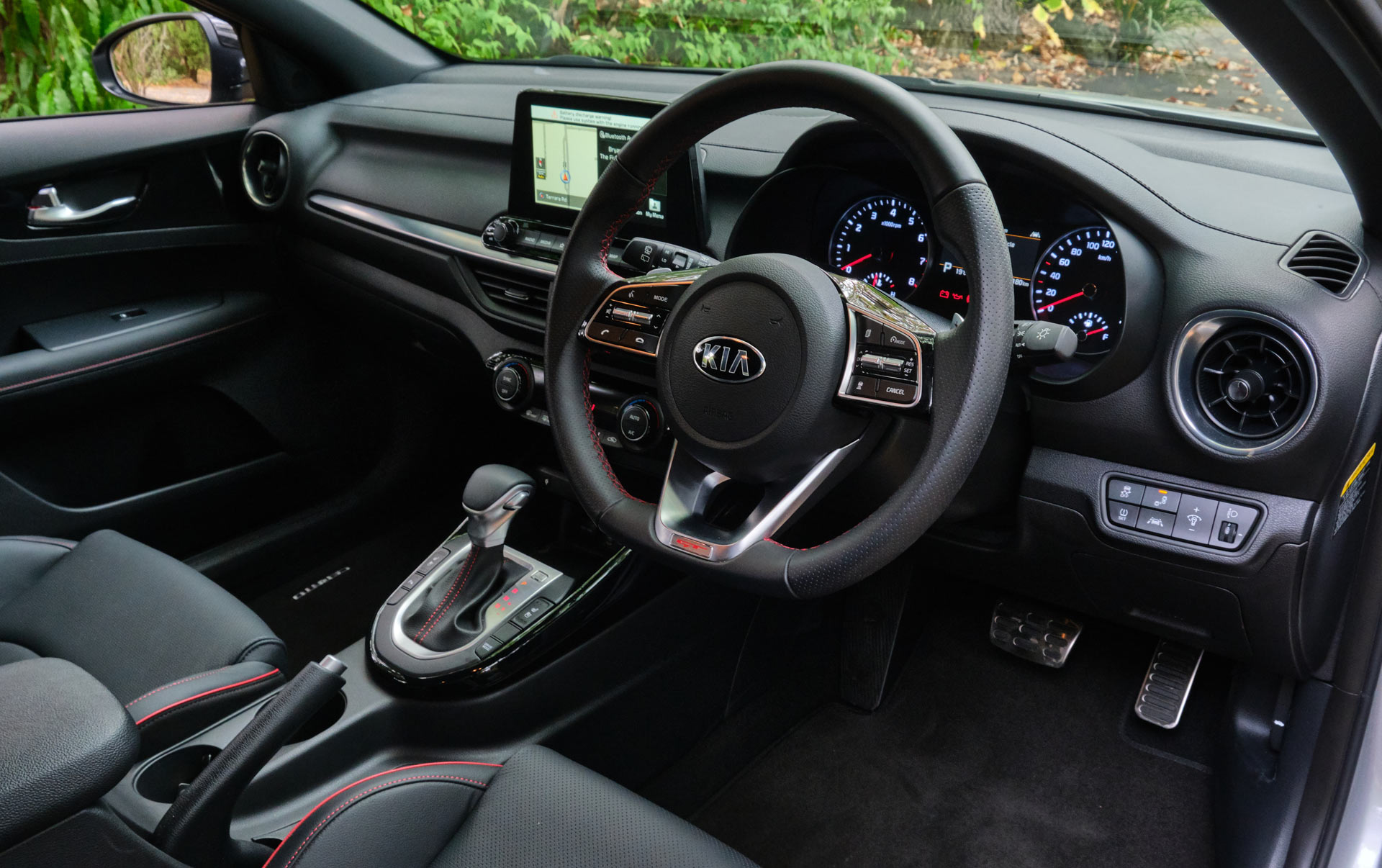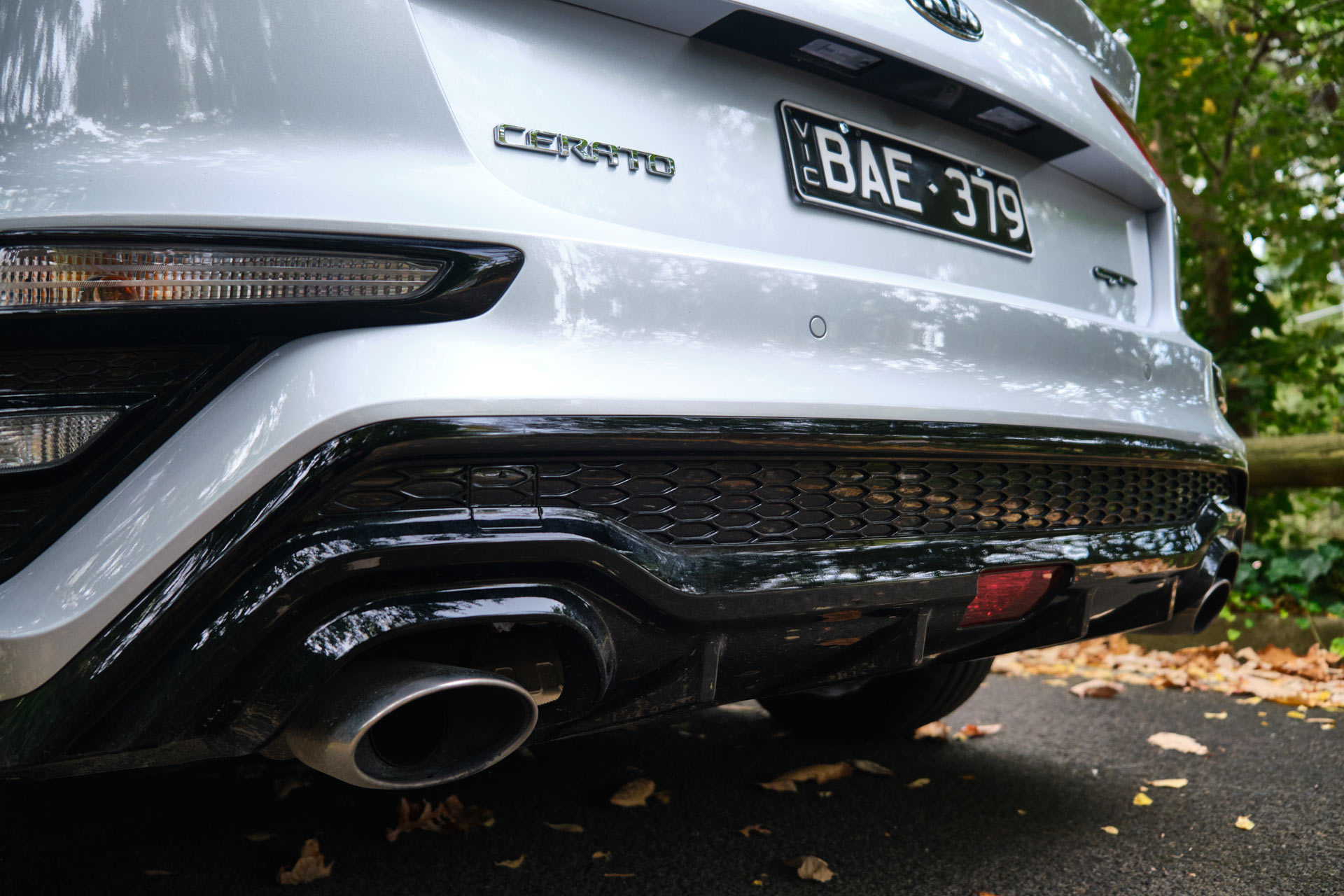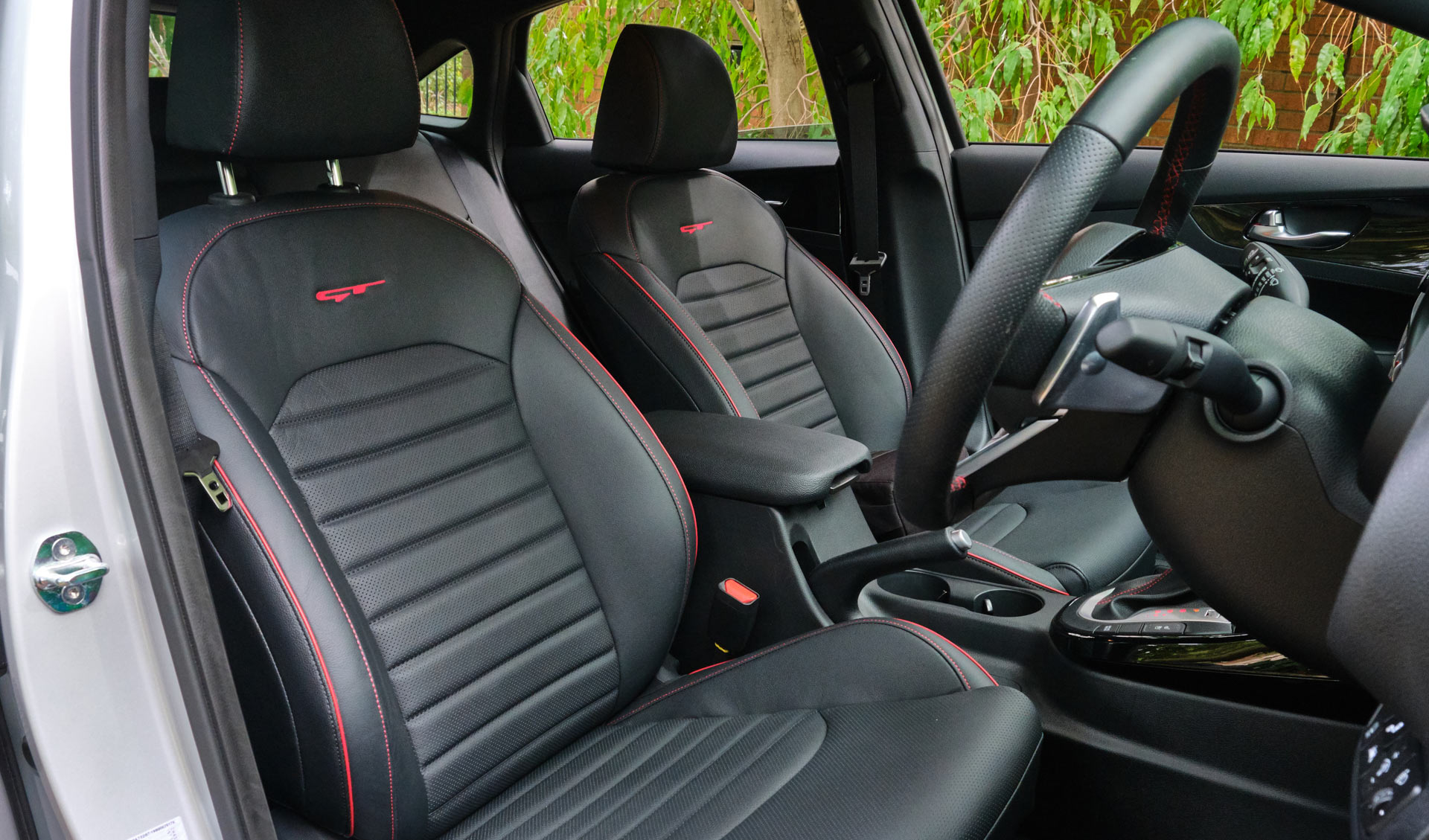In the last decade, the world of hot hatches has gone from strength to strength with car manufacturers continually launching new models in the hopes of one-upping each other. Things have become so fiery within this segment that we have a front-wheel drive hot hatch in the form of the Honda Civic Type R with 316 hp and the all-wheel drive Mercedes-AMG A 45 S with a full 100 horses more than that.
Cast your mind back 10 years and the VW Golf GTI, arguably the original and most iconic hot hatch of them all, had a 2.0-liter turbo with 201 hp (150 kW) sent through the front wheels and it was considered a class-leader.
Now, we have vehicles like this, the 2019 Kia Cerato (marketed as the Forte in North America and Ceed in Europe) GT hatch with the same amount of power as the Mk6 GTI and one of many cars competing in the ‘warm hatch’ space that offer the performance of hot hatches from a decade ago. Let’s find out what’s what.
A good starting point
Powering the Cerato GT hatch is a 1.6-liter turbocharged GDI four-cylinder engine with 201 hp (150 kW) at 6,000 rpm and 195 lb-ft (265 Nm) of torque from 1,500 to 4,500 rpm. Coupled to this engine is a seven-speed dual-clutch transmission driving the front wheels. This is far from the only vehicle in the Kia and Hyundai family to use this engine as it also powers the Hyundai i30 N Line, Hyundai Veloster Turbo, and is expected to drive the new Elantra N Line sedan.
Read Also: 2020 Kia Forte GT-Line Is For Those Who Just Want To Look Sporty
However, it is not the powertrain that first strikes you with the new Cerato HT hatch. It is the design.
When Kia introduced the fourth-generation Cerato, also sold as the Forte in the United States, last year, it was far more stylish than its predecessor and this is particularly apparent in hatchback guise. The sharp front end includes Kia’s tiger-nose grille design that’s finished in black and includes some lovely red accents.
Found hidden within the headlights are four individual LED daytime running lights that don’t look too dissimilar to the DRLs used in many recent Porsche models. The long and low-slung body of the Cerato GT hatch is particularly apparent from the sides, giving the car a unique presence on the road and immediately making it stand out from the dozens of other hatches on the market. Rounding out the nice styling touches are narrow taillights, dual tailpipes, and a gloss black lower bumper. For a warm hatch, it ticks all the visual boxes and, to my eyes, has more presence on the road than its sibling, the i30 N Line.
The cabin of the Cerato GT hatch is familiar Kia and includes a number of welcome luxuries. Directly in front of the driver is a flat-bottomed steering wheel with a GT badge and a pair of small paddle shifts. Look to the right and there are buttons for the memory seats, while at the left you will find switches for both heated and cooled seats.
Taking pride of place in the cabin is an 8.0-inch touchscreen with satellite navigation, Apple CarPlay and Android Auto. Kia has also fitted an eight-speaker JBL audio system offering up good sound quality. Standard features are aplenty and include alloy sports pedals, keyless entry and start, a powered driver’s seat, a reversing camera and Kia’s suite of driver assistance systems like lane-keeping assist, rear cross-traffic alert, adaptive cruise control, and blind-spot monitoring. Our test car also had Qi wireless charging.
A decent performer
On the open road, the Cerato GT hatch is a very nice car to drive but it’s not without its faults.
The engine offers strong performance across the rev range and is eager to be pushed. For a vehicle this size, it offers more than enough performance for most buyers. No acceleration figures have been released by Kia, but it’ll hit 100 km/h (62 mph) in a touch over 7 seconds.
The transmission though could be better and is not up to the level or some other dual-clutch transmissions on the market, such as from Volkswagen. In fact, during everyday driving, it doesn’t really feel like a dual-clutch at all as the shifts can sometimes feel labored and the gearbox can across as confused about when to shift and when not to shift. This can easily be rectified by using the paddle shifters, but if you try to hold on to a gear for too long, the dual-clutch will change up for you.
As one may expect from a warm hatch, the Cerato GT comes into its own when you pick up the pace and give it some abuse.
All Kia models sold in Australia benefit from a suspension tune to suit local roads, and with the Cerato GT that’s resulted in a ride that combines sporty aggressiveness with everyday usability. Would-be buyers should be aware that they won’t be getting the comfiest ride if they opt for the GT over lesser variants, but we think this is a trade-off most will be willing to make for the added performance.
Cornering feels like the car’s bread and butter. Switch it into Sport mode and throw it into a corner, and the hatch provides good grip, thanks in no small part to the Michelin Pilot Sport 4 rubber. It is very difficult to incite any form of understeer under throttle when cornering. The steering is also nicely weighted and provides reasonable, but not superb, feedback of what’s going on beneath you.
Cars like this are often at their best when driven constantly in their Sport or Race modes but there is one big drawback about driving the Cerato GT hatch in Sport: the sound. Kia has fitted its warm hatch with a sound induction system that is so artificial you may as well be pumping out the sound of a burbling V8 from your phone’s speaker. The Kia Stinger has a similar system but it can be disabled. The same cannot be said with the GT. The only way to turn it off would be to pop the hood, take off some trim near the windscreen, and unplug the little induction speaker. It’s particularly frustrating is that it drowns out the sound of the exhaust which, from the outside, is actually quite pleasant to listen to.
During my week with the car, I averaged 9.1 l/100 km (25.8 mpg US), up from the car’s official figure of 6.8 l/100 km (34.6 mpg US), but a good indicator of what buyers can expect in the real-world with a mix of urban and highway commuting as well as the odd sporty drive.
Great bang for your buck
Prices start at AU$37,547 (equal to US$24,540 at current exchange rates) including AU$4,057 (US$2,651) in on-road costs. However, at the time of writing, Kia Australia has a drive away offer of just AU$33,990 (US$22,157) including 12 month’s registration and 12 month’s third party insurance. Like all other Kia models, the Cerato GT hatch comes with a 7-year warranty and the option of capped-price servicing for seven years spaced out every 12 months.
This is a very compelling car at that price. Sure, it cannot hold a candle in terms of performance to the much more expensive and powerful hot hatches on the market, but as warm hatches go, it will suit most buyers. It’s just a shame about that fake noise…





